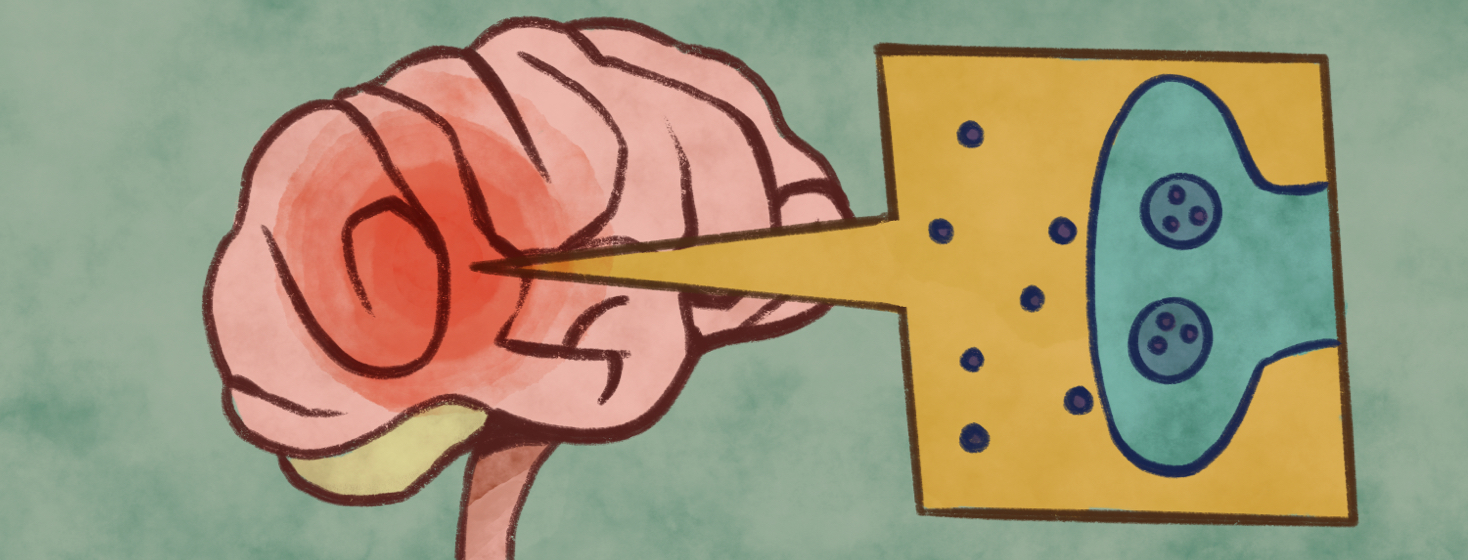CGRP and More: Treating Trigeminal Nerve Dysfunction
Reviewed by: HU Medical Review Board | Last reviewed: April 2023 | Last updated: July 2023
Migraine was once thought to be a problem of the blood vessels in the brain. In the past 2 decades, researchers have learned that dysfunctional nerve signaling is also involved. Nerve involvement helps to explain the variety of migraine symptoms.1
Key players in migraine are the trigeminal nerves and a signaling molecule called CGRP. They have become targets for new migraine treatments. Today, drugs that block the CGRP receptor are able to prevent migraines. These drugs are called CGRP antibodies. CGRP is also the target for new acute (or abortive) treatments. These drugs include ditans and CGRP gepants.
Background: The role of CGRP in migraine
The trigeminal nerve runs from the brain to the face. It is responsible for sensation in the face and head. It is also responsible for jaw movement, such as biting and chewing. It has three branches that go to the eye and forehead (ophthalmic), cheek (maxillary), and jaw (mandibular).
CGRP (calcitonin gene-related peptide) is a neuropeptide, a small protein that transmits signals in the brain. Sensory nerves produce and release CGRP.
CGRP has an important role in the current theory of migraine. At the start of a migraine attack, the trigeminal nerve releases CGRP. CGRP causes blood vessels in the head to swell. It contributes to some inflammation around the brain. Trigeminal pain pathways are activated.2
There is a lot of evidence that CGRP has an important role in migraine. For example:2
- Blood levels of CGRP go up during a migraine attack.
- People with migraine have higher CGRP levels between attacks than people without migraine normally have.
- CGRP levels are higher in people with chronic migraine than episodic migraine.
The lock-and-key analogy
The lock-and-key analogy is helpful for understanding how new medications disrupt the CGRP process. The CGRP peptide is the key. The CGRP receptor is the lock. When the key opens the lock, the pain process begins or worsens. New medications that block the lock or change the shape of the key interfere with the function of CGRP and treat migraine.
Certain medications block the “lock”, including:3-5
- Aimovig™ (erenumab), a CGRP antibody for migraine prevention
- Ubrelvy™ (ubrogepant), a CGRP gepant for acute migraine treatment
- Nurtec™ (rimegepant), a CGRP gepant for acute migraine treatment
Other medications attach to the “key”, including:6-8
- Ajovy™ (fremanezumab), a CGRP antibody for migraine prevention
- Emgality™ (galcanezumab), a CGRP antibody for migraine prevention
- Vyepti™ (eptinezumab), a CGRP antibody for migraine prevention
CGRP antibodies: Modern migraine prevention
The approval of the first CGRP antibodies in 2018 was a breakthrough in migraine treatment. These drugs are the first migraine-specific medications for preventing migraine.
Four CGRP antibodies are now available:
High quality trials show that these medications reduce the number or severity of migraine days.
Ditans and CGRP gepants: Modern acute treatment of migraine
In late 2019 and early 2020, 3 new drugs were approved for acute treatment of migraine. These drugs stop migraine attacks when they start.
Ubrelvy (ubrogepant) and Nurtec (rimegepant) are new drugs in the CGRP gepants family. Gepants bind to the CGRP receptor, which prevents CGRP from binding to it. This stops the pain processes and relieves the migraine.4,5
Reyvow™ (lasmiditan) is the only drug in the ditan family and it keeps CGRP from being released in the first place. Reyvow binds to a serotonin receptor called 5-HT1F, which is found in the brain. (Triptans target different serotonin receptors, called 5-HT1B and 5-HT1D.) Reyvow binding turns on—activates—the 5-HT1F receptors. When the 5-HT1F receptors are active, they prevent the trigeminal nerve from releasing CGRP. By reducing the amount of CGRP, Reyvow reduces the pain processes in the brain.2,9,10
Old drugs, discovery of new mechanisms
If CGRP and the trigeminal nerve are the main problem, why do older and non-specific drugs work?
It turns out that some of them actually do affect CGRP. For example, sumatriptan blocks the release of CGRP from the trigeminal nerves. The effect of triptans on the blood vessels may not be the reason they work.1
Botox was originally used for reducing wrinkles, neck spasms, and excessive sweating. In 2010, it was approved for migraine prevention in people with chronic migraine.11 Additional study has shown that Botox reduces CGRP levels between migraine attacks in people with chronic migraine.1,11
Read more on the history of migraine treatments in this article.

Join the conversation